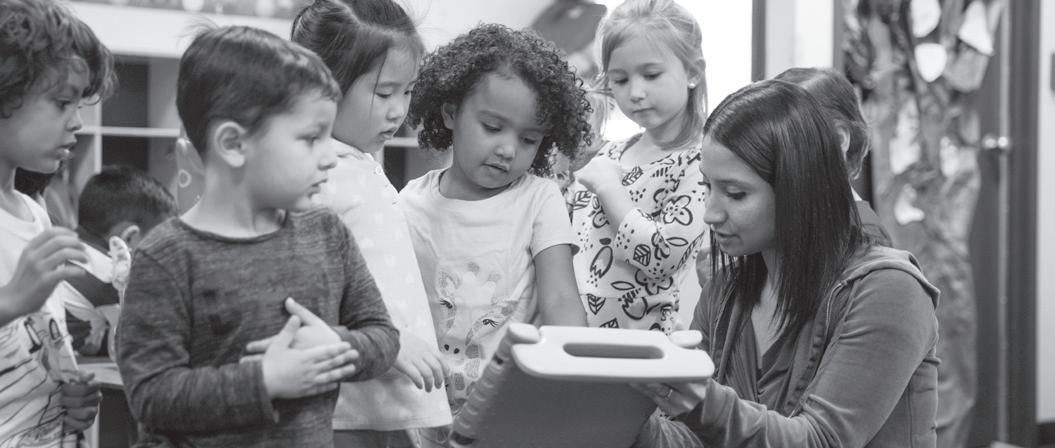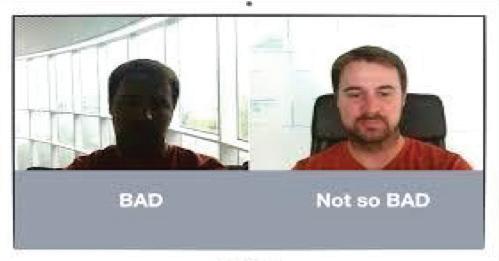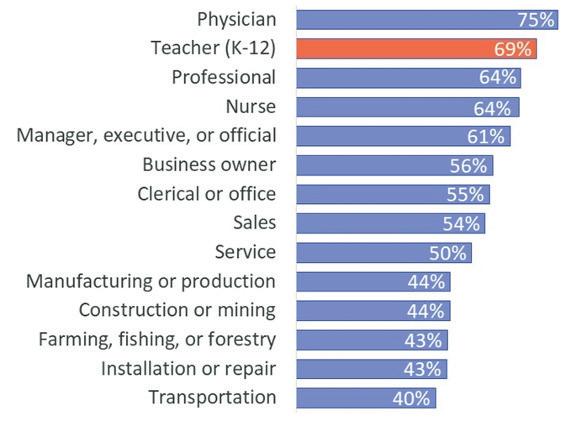Preparing for Interviews and Job Fairs
Tips to Help Student Teachers Crush a Video Interview Greg Dietz Assistant Superintendent for Human Resources (Interim), Argo Community High School District 217, Illinois
F
or many pre-service teachers, the chance of landing a teaching position has never been higher. School districts nationwide are desperately seeking applicants to fill their vacancies, and they are turning to technology to help them expand their recruiting efforts. According to IDG, the world’s leading technology media, data and marketing services company, the infusion of video interviews into the talent acquisition process was one of the top five recruiting trends for 2018. As a result, your chances of being granted a video interview have increased dramatically.
tape it over the camera lens. This strategy allows you to look at the photo while answering questions so that you maintain good eye contact with the lens.
Video interviews come in two forms, however, the fastest growing type is the “one-way” or “pre-recorded” video interview. With this type of interview, candidates are granted a set amount of time to record their answers to questions that are posed to them either in print, on their device, or through a video clip. Often, a recruiter is shown “asking” the questions and then the candidate has 2-4 minutes to respond. Generally, you can expect to receive 4-6 questions and your recorded responses will then be shared with other employees within that school district. While they do take some getting used to, one-way video interviews are convenient for both the employer and the applicant. The candidate can complete as many interviews as his schedule allows without taking time off work or student teaching to travel to interview sites.
Background View & Attire
If you receive an invitation for a one-way video interview, treat it just like a regular interview. These video interviews are often used to screen applicants and to determine which candidates will be granted live interviews later. Most software systems will guide you through a practice recording session so that you can become familiar with the technology. However, you will likely not be allowed to erase and rerecord a second response once you’ve seen the interview questions, so be sure to practice first! Also, you will be allowed some time after the question is presented to gather your thoughts…generally about 30-60 seconds. After this “question-processing time” expires, the system will start recording your image, and you should then begin answering the question. A countdown timer is typically displayed on the screen so that you know when to start answering the question and how to gauge the length of your responses. When the timer reaches 10 seconds, you need to begin concluding your response. Remember, if you have satisfactorily answered the question with time remaining on the clock, it is perfectly acceptable (and expected) to stop the recording and move on to the next question.
No disturbances
Webcam & Lighting Most laptops sold today have built-in web cameras; however, you can use your smartphone to complete your video interview, as well. You should position yourself directly in front of the camera and have your upper arms, shoulders and head in view on the screen. Do not zoom in on your face or zoom out such that you appear far away. Also, you should position the webcam slightly higher than forehead height and tip the camera down towards your face. To avoid appearing on the screen as a dark silhouette, aim light at you face coming from behind the camera. Too much background light will blind the interviewer, while too little lighting will darken your image.
Eye contact & Speech Fillers
68
Try to make eye contact with the webcam lens as much as possible. Avoid staring intensely at the screen or leaning in too close to the camera. One trick is to cut a hole in a photo of a friendly face and American Association for Employment in Education
Be aware of your use of fillers like “um” or “you know.” Overusing these phrases can be distracting to the interviewer. Remember, recruiters are looking to hire people who can keep students engaged in the learning process, so it’s perfectly acceptable to smile and let your personality, sense of humor and enthusiasm for teaching shine through. No matter how well you’ve set up your lighting, or how well you interview, if your workspace is messy, it will reflect poorly on you. Make sure any background space visible to the camera is void of clutter and distractions. You want the interviewer’s attention on you, not on your wall posters or eclectic office decor. The old saying, “dress for success” holds true for video interviews just as it does for in-person interviews. Bold patterns can look messy and distracting on the interviewer’s screen and too much jewelry takes the focus off what you have to say. A black or navy blue business suit with a solid, neutral background will help you come across as more professional. Children, spouses, and pets should not appear in your interview; choose a time and a space where you will not be interrupted. You would never bring your cat to a live job interview so take measures to prevent those uninvited guests from showing up in your video interview. Let others in your home know that you will be unavailable for 20-30 minutes and that you should not be interrupted. Also, be certain to turn off your phone. Don’t be scared of video interviewing technology. It is meant to make the selection process more efficient, and it allows you to interview at the times and places that are most comfortable for you. Given that pre-service teachers often have professional resumes that cannot stack up to those of more experienced teaching candidates, video interviews can help level the playing field for inexperienced teachers by allowing more applicants the opportunity to interview for positions. Following the tips above will help you to showcase your skills and get you hired!































